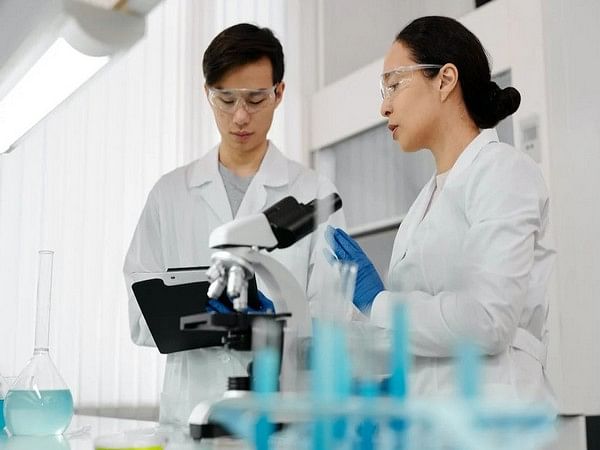Los Angeles [US], November 19 (ANI): According to a study, ribosomes can act as a sensor for crosslinking damage. Ribosomes are made of RNA and protein, and are responsible for protein synthesis in cells. Ribosomes read the messenger RNA (mRNA) sequence and translate it into a string of amino acids.
Recently, Professor Julian Stingele of the Gene Centre Munich and colleagues demonstrated that RNA crosslinking damage is deleterious because it interferes with protein synthesis.
“It was previously difficult to study specifically RNA crosslinking damage, as most chemicals also damage DNA,” said lead author Jacqueline Cordes. “We, therefore, utilized a new approach to induce and study RNA damage in the absence of DNA damage,” added Dr Shubo Zhao, also lead author of the study.
The study used a new approach to study RNA damage without DNA damage. The researchers discovered that ribosomes get stuck when they encounter a lesion. This causes collisions with other ribosomes, which triggers the removal of the damage.
Aldehydes are toxic chemicals produced by metabolic processes in the body. They are dangerous because they bind to and crosslink biological macromolecules like DNA, RNA, and proteins.
Crosslinking damage to DNA must be repaired by the cell to prevent premature ageing and cancer. However, whether and how cells detect and repair single-stranded RNA cross-linking damage was previously unknown.
Using this novel experimental system, the researchers uncovered a previously unknown mechanism by which the ribosome can act as a sensor for crosslinking damage.
Ribosomes run along the messenger molecule mRNA to translate the information stored in the mRNA into proteins.
As the researchers demonstrate, the ribosome gets stuck as soon as it encounters a lesion. This leads to collisions with subsequent ribosomes, triggering the removal of the damage.
“Our new findings indicate that compounds commonly considered solely as DNA-damaging agents challenge cellular homeostasis on a much broader level. Given that such agents are often used for chemotherapy, our work has imminent implications for the mechanisms of action of frequently-used anti-cancer drugs,” said Stingele. (ANI)
This report is auto-generated from ANI news service. ThePrint holds no responsibility for its content.



